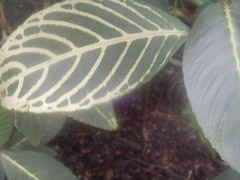I was tracing back through my notes from when I was ill and found the story about how zebras give life to the deserts they roll in. This is proper megafauna as environmental shaper stuff. If this is something you are unfamiliar with, it's the idea that megafauna manage the environment they live in for their own benefit. If that all sounds a bit gaia-suspicious, no need to worry. It can be a co-evolved emergent behaviour, with a little light evolutionary shaping.
Rolling pits to chicken scrapes
So, the zebras have their rolling pits, and these have their own distinct biome of zebra-tolerant plants. They also act as water reservoirs, bringing a tiny flush of rich green, fertilised by zebra scurf and soil. How did they find this out? They flew drones over the desert and saw these curious round green patches after rain. Zebra gardens.
Chickens, as any back-garden bird-keeper knows, also do a lot of scraping. I can't find any papers on their contribution to back-garden biodiversity, though. They have a tendency to see laws as to-scrape lists and scoop out dust baths in the dry shady soil under shrubs.
This can lead to chicken fatigue.
But, in all likelihood, their scrapes do have an impact, not necessarily negative. Rich fertilisation from chickenshit deposits, foliage stripping from busy beaks. Water retention reduced as vegetation cover decreases. Chicken runs need to be moved around, of course. But the grass comes greener, as grass wants over-fertile soil.
Getting it past the ethics committee might present challenge, but a drone study of the impact of back garden chicken keeping (or animal keeping in general) on soil fertility, cover and diversity might hold revelations.


































